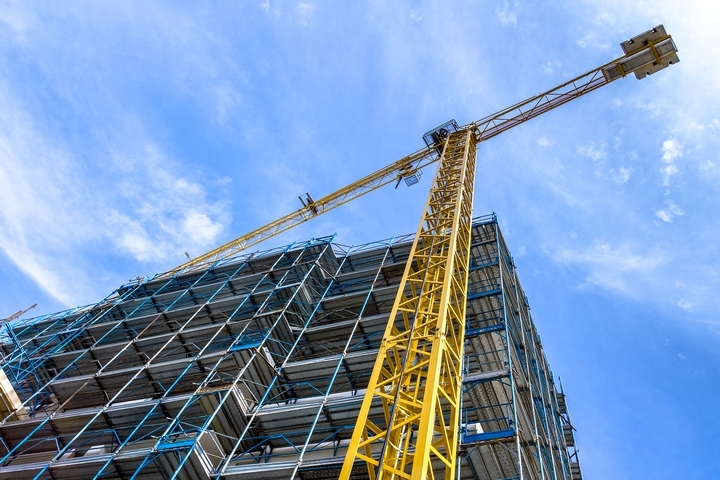
There are several different types of building construction, and many factors will come into play when determining which type to use in your construction project.
The purpose of the structure can help determine which type you need. For example, you may require a heavy construction method for a two-storey home that needs to support multiple floors. On the other hand, you wouldn’t need this structure if you were building a detached garage. The size of the structure also matters. A different construction type will be needed for a garage or house vs a large grocery store or mall that requires open spaces without columns or inner walls.
You’ll also need to consider load-bearing constraints for tall buildings and environmental factors, like when building in areas that are prone to earthquakes or hurricanes. The cost of materials and the speed of construction needed will also come into play when choosing a construction type.
Commercial construction companies like Baycrest are familiar with these different types of projects, along with their benefits and characteristics. Understanding their pros and cons of each building construction type will give you a better idea of how to approach your next construction project. Here are the six building construction types and their characteristics:
Type #1: Steel Frame Construction

For larger buildings, steel frame construction is commonly used. Using this method, steel trusses and columns are built to support roofs and floors. It’s easy to lift steel using a tower crane and the components can then be easily welded or bolted together, making it a preferred choice for high rises.
Furthermore, steel is a readily available material and it’s flexible, so it’s good for earthquake-prone or high-wind regions. While steel is prone to corrosion in areas of high humidity, it has a high strength-to-weight ratio.
Type #2: Light Gauge Steel Construction

Light gauge steel is a building construction type that can be used in building structures to make studs, plates, joists, and rafters. The material is protected by a galvanized coating, and in load-bearing structural pieces, a heavier material is used.
Light gauge steel is easy to work with – it can be easily carried, cut, and erected on site. You’ll see this construction type most commonly used in commercial buildings, but it is rising in popularity in residential work as well. It’s often chosen because of its high strength-to-weight ratio, its low cost, and its flame-resistant characteristics. However, you may need specialized cutting and fasting tools for these projects.
Type #3: Wood Frame Construction

The oldest and most commonly used type of construction in the world, wood frame construction has several advantages. Wood is a great material to work with because it’s renewable, plentiful, and easy to work with. You can choose from timbers or standard lumber.
Wood can be carried by hand and cut on site. Further, it’s easy to drywall and panel interior walls when choosing wood construction. Wood frame construction is also cost effective, which makes it an excellent option if you’re on a tight budget. It’s no surprise that most residential construction is made with this building type.
For all its advantages, wood does have its disadvantages, however. It’s subject to degradation from the elements, it’s not strong enough to withstand extreme weather conditions, and it’s flammable.
While wood used to be more commonly used on building exteriors in the past, this has changed today. Wood exterior walls and roofs have been replaced with more fire-resistant materials, including stone, brick, and shingles.
Type #4: Concrete Frame Construction

This construction type uses reinforced concrete slabs, beams, and concretes to build the support structure. Concrete frame construction is often the preferred building method for parking garages, elevated roadways, and high-rise buildings.
However, most of the components need to be cast on site, which can slow down the project due to the curing time. This construction type also isn’t recommended in earthquake-prone areas. It can withstand other environmental conditions such as wind very well over time, though.
Why use concrete frame construction? The material can be locally sourced, it’s recyclable, and it can be formed into various shapes.
Type #5: Joisted or Load-Bearing Masonry Construction

This building construction type is characterized by its used of bricks or concrete blocks to build load-bearing walls. The ceilings and floors are then built using wooden joists.
Load-bearing masonry construction provides a heavy structure, but that structure is so rigid that it cannot flex. This means it’s a poor choice for areas prone to earthquakes and tremors. It’s also not recommended for residential construction. However, structures can be built from readily available and cost-effective materials, such as bricks, stone, or cinder blocks, so it’s still a good option for commercial projects.
Because each brick needs to be placed by hand, this is a labour-intensive construction type.
Type #6: Pre-Engineered Construction

If you’re facing time constraints, consider a pre-engineered building, which allows you to put up a structure quickly. You just have to order a kit, and all the parts are delivered ready to be assembled.
You can use pre-engineered construction for a variety of structures, including houses, hangers, sheds, shops, and garages.